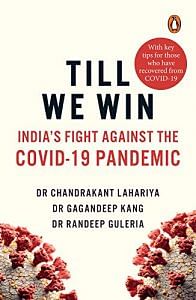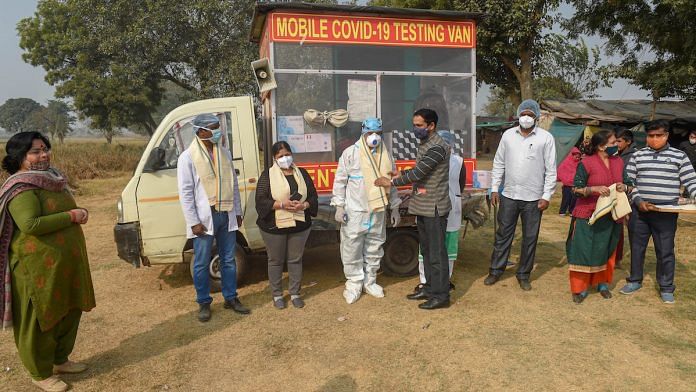In early 2020, the health sector in India was about to shift gears from the policy formulation stage to the implementation stage. It is at this point that the pandemic happened. The importance of having a robust public health system has never been felt more acutely. We have learnt a few things in these nine months into the pandemic, which have been detailed in the section below and summarized in Box 10.1.
Well-functioning primary healthcare services as well as stronger public health services are essential to keep the society healthy:
A majority of COVID-19 patients, nearly 80 per cent, needed only an initial interaction with health systems and no medical intervention during the entire period of recovery. They were either kept at CCCs, mainly to isolate them from healthy individuals, or were allowed home isolation. Such an approach reduced the risk of these patients transmitting the virus to others while visiting large facilities to seek care. Most of the interventions, be it contact tracing, testing, isolation or advising people on COVID-19-appropriate behaviour, were being delivered by primary care and public health staff. It is for this reason that countries with a stronger primary healthcare system (such as Thailand and Vietnam) fared much better than countries with a hospital-centric health system. Taiwan largely controlled the pandemic through effective testing and contact-tracing approaches, delivered through the primary healthcare and public health teams.
Neighbourhood clinics play a bigger role in ensuring good health than large hospitals:
The pandemic has shown us the utility of smaller facilities over mega hospitals. In the early period of the outbreak, big hospitals became overburdened as all suspected and sick people thronged them. Panic led even patients with mild illness to rush to these hospitals. This drove home the point that a good referral system helps in balancing out the load of patient care and ultimately leads to better patient care. During the period of the pandemic, a majority of COVID-19 and non-COVID-19 services were provided by the PHCs and neighbourhood clinics.
Also read: How to prevent future pandemics? 22 leading scientists tell us
Health is about a broad range of services and providers:
To stay healthy, we all need much more than hospitals and doctors. Health services are a combination of public health (preventive, promotive services) as well as medical care (clinical/curative services), among others. If it were not for preventive and promotive health services, which help in reducing disease, hospital services would never be enough to treat all the people who get sick. Also, health needs multi-sectoral inputs, and the importance of sanitation and infection-control measures have now become more evident. Focusing on only one type of service will not suffice.
Non-pharmacological interventions are equally important and effective:
The war against COVID-19 has largely been fought by people adopting and adhering to the non- pharmacological interventions or ‘the social vaccines’ of wearing a face mask, handwashing, and physical distancing. Till (and even after) effective therapies or a few vaccines become available, these interventions will continue to play a key role in decreasing the disease burden. Other than for COVID-19, there are many non-pharmacological interventions that are proven against diseases such as diabetes and hypertension: healthy diet, regular physical activity, no smoking and moderate or no use of alcohol. It is time that the approach of encouraging people to adopt a healthy behaviour becomes mainstream for other health conditions as well.
Laboratory testing and diagnostic services are an important part of overall health service delivery:
Testing can help in early identification of infection, prevent the spread of disease, and guide early interventions. This is also applicable for health services in non-emergency times. Testing forms the basis for other strategies which are planned at local and national levels and must be pursued aggressively.
Better functioning government-funded health systems are more effective in an early response to epidemics and pandemics:
Pandemics are unprecedented challenges and no health system is fully prepared to respond to these without additional efforts. However, stronger health systems funded by governments mount a more effective response, which also allows for surge capacity.
Also read: Good news from India’s Covid battle — fatality rate is down 50% since May
Health services entail teamwork between health and non- health contributors:
Keeping people safe and healthy requires interventions across a broad range of services, including testing for identification of those with infection, tracing the healthy who have been exposed and are at risk of falling sick, isolating those who are sick and can transmit infection, treatment for those who need medical care, and so on. For all of these, we need not only doctors and nurses, but also pharmacists, laboratory technicians and frontline workers. We also need coordination and collaboration with sanitation workers and community members. The pandemic has taught us that to tackle health issues comprehensively we need to move out of silos. Multi-sectoral collaboration is essential for comprehensive preventive and curative health.
Frontline workers are at the heart of health services:
When the history of the fight against COVID-19 is documented, the efforts of frontline workers from the ASHAs, AWWs to ANMs will find a special mention. They are the ones who have guided the health system from the field and tracked the infection in the community. They perform yeomen services even during non-pandemic periods.
The private sector has a role to play in health services which can be harnessed with effective regulation:
In the early part of the pandemic, care was provided mainly by the public sector and since then, at every stage of the pandemic, the sector has played a major role. However, a proportion of COVID-19 hospital beds and ventilator- related services are being provided by the private sector as well. It is also contributing to COVID-19 testing services. But many state governments had to invoke regulations, including the capping of the price of testing and treatment services, to make these services affordable to a large majority of patients.
Health and economy are interlinked:
The pandemic has affected the economy of nearly all countries, paralysing health and economic services alike. The link between health and economy for a nation came to the forefront during the pandemic. The economic impact was lower in the countries which had better and long-term sustained government investment in health services. Experts continue to emphasize that it is wise to invest in health and wiser to invest in primary healthcare and public health services. For a nation’s economy to grow, investment in a good health system is essential.
 This excerpt from ‘Till We Win: India’s Fight Against The Covid-19 Pandemic’ by Chandrakant Lahariya, Gagandeep Kang and Randeep Guleria has been published with permission from Penguin Random House India.
This excerpt from ‘Till We Win: India’s Fight Against The Covid-19 Pandemic’ by Chandrakant Lahariya, Gagandeep Kang and Randeep Guleria has been published with permission from Penguin Random House India.



